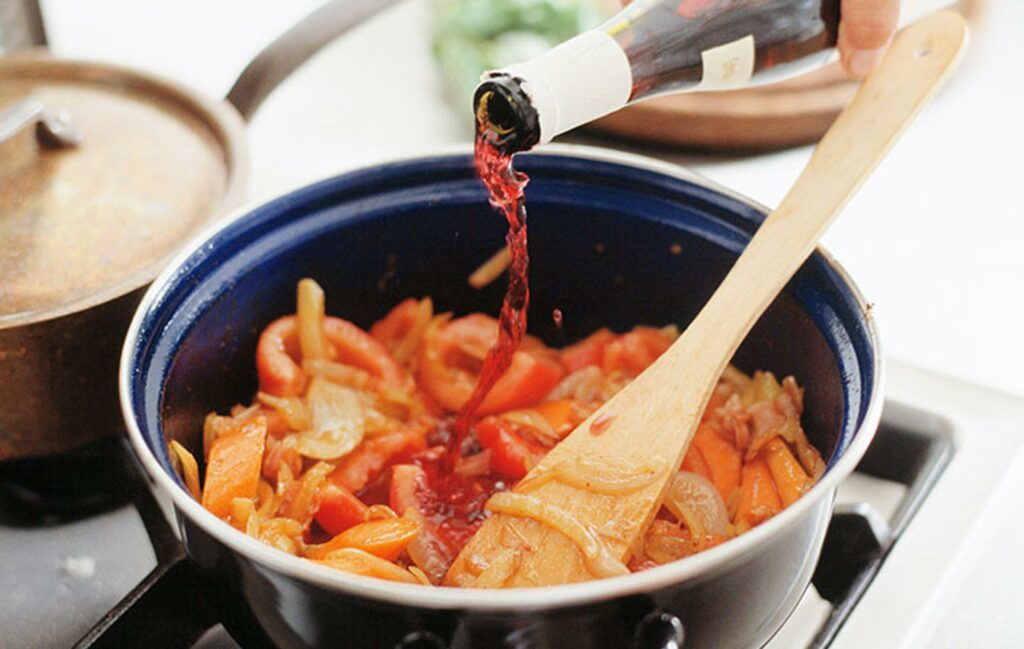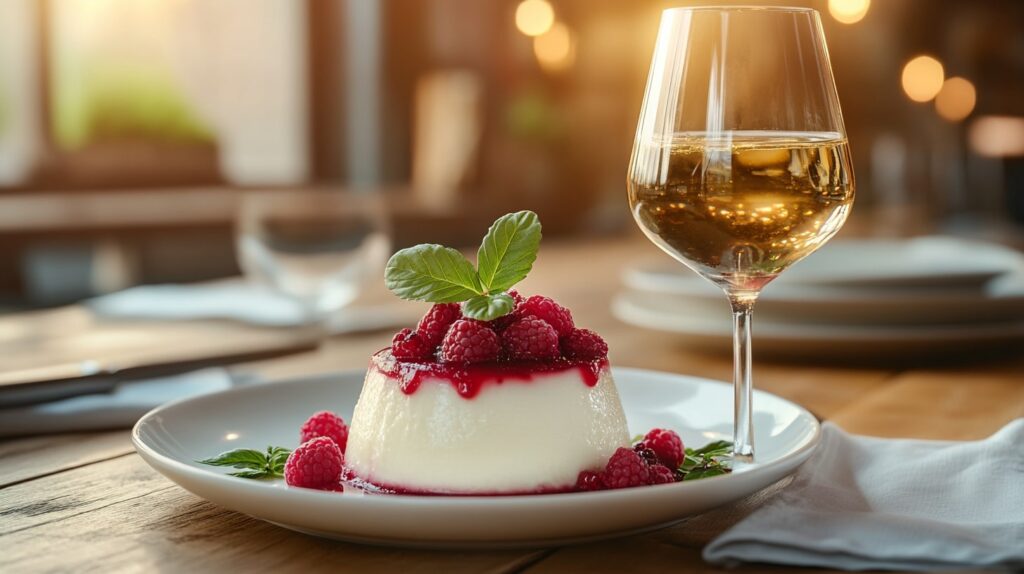Wine isn't just enjoyed in a glass. It can be cooked, integrated and used to enhance dishes. Used properly, it adds depth, roundness and character to your recipes. But there are a few essential rules you need to know.
If you're interested in wine-related articles, download our app for IOS or Android. It will give you access to our wine lexicon, our articles and our innovative solution, designed for all wine consumers and collectors.
Why cook with wine?
Wine adds acidity, sugar, tannins or aromas, depending on its nature. It binds flavors, reinforces sauces, deglazes or tenderizes meat. It can be adapted to all types of dishes: meat, fish, vegetables or desserts.
Used methodically, it enriches your preparations without masking them. It becomes an ingredient in its own right. Culinary wine technique is not based on intuition, but on precise choices.
Choosing the right wine for each recipe
The wine you cook must be good. Poor-quality wine doesn't improve with cooking. Choose a wine you could drink, even if it's not a grand cru.
A full-bodied red wine is ideal for simmered dishes such as boeuf bourguignon. A dry white works well with fish, poultry or creamy sauces. For a sweet wine recipe, prefer a natural sweet or syrupy wine.
Integrating wine at the right time
The moment to add the wine is crucial. At the start of cooking, the wine partially evaporates. It leaves its aromas without the alcohol. At the end of cooking, it remains more present. It can unbalance the dish.
Good wine-making technique often involves reducing the wine. You boil it for a few minutes to concentrate the flavors and release the alcohol. This step is the key to mastering wine cooking.
Respect quantities
Wine should remain a seasoning, not the main ingredient. Too much wine masks other tastes. Too little makes its presence unnecessary. One or two glasses are enough for a 4-person dish.
Taste as you go. Adjust if necessary. Cooking with wine requires balance and moderation. Each grape variety and vintage reacts differently to heat.
Matching wine and ingredients
The success of a wine recipe also depends on the consistency of the ingredients. A tannic red wine goes well with beef or lamb. A crisp white wine enhances shellfish or green vegetables.
Match the wine to the products used. Look for complementarity. Culinary wine technique is based on harmony, just like traditional food and wine pairing.
Common mistakes to avoid
Many cooks make the same mistakes:
- Use a corky or acidic wine: the defect is amplified by cooking.
- Put cold wine in a hot pan: it breaks the cooking process.
- Do not reduce the wine: it will retain an unpleasant bitterness.
- Confusing cooking wine with good wine: the former is not made for cooking.
Avoid these pitfalls. Take the time to understand wine cooking. It changes the final result.
Cooking with red wine: practical tips

Red wine adds depth. It's ideal for full-bodied sauces, braised meats or roasted vegetables. It should be reduced for a long time, to soften the tannins.
A good red wine recipe: coq au vin. The wine cooks for over an hour, with carrots, bacon and onions. The result is a smooth, rich, fragrant sauce. Use a Pinot Noir or Gamay, not too woody.
Cooking with white wine: subtlety and finesse
White wine is more delicate. It goes very well with veal, poultry or fish. Choose a dry white with low acidity. Avoid very woody or sweet whites.
An example of a white wine recipe: mussels marinière. The wine is added at the beginning of cooking, along with shallots, parsley and butter. It perfumes without dominating. It gives way to the texture of the shellfish.
Reducing wine: a fundamental gesture
Reduction concentrates flavors. It is carried out over medium heat, without a lid. Allow to boil gently, until the wine loses a third to a half of its volume.
This eliminates alcohol, preserves aromas and avoids bitterness. Wine-making technique relies heavily on this step. It guarantees elegant, well-balanced sauces.
Integrating wine into desserts

Wine also finds its way into desserts. Pears in red wine, figs roasted in muscat, or sabayons in marsala are just some examples. Wine becomes syrup, perfume or fondant.
Use sweet, mellow or syrupy wines. Reduce them with spices and a little sugar, and let them coat the fruit. A well-thought-out sweet wine recipe can rival the greatest pastry classics.
Cooking with wine for all levels
You don't have to be a great chef to succeed in cooking with wine. All you need to do is choose the right wine, follow the right steps and taste often. It's a sensory approach, intuitive as well as technical.
With a little experience, you'll learn to adapt wine to your dishes. You'll discover its subtle effects on texture, aroma and color. Culinary wine technique becomes a real pleasure.
If you enjoyed this article, please feel free to read the following article "From grape to bottle: the major stages in the development of wine"which may also be of interest to you!





